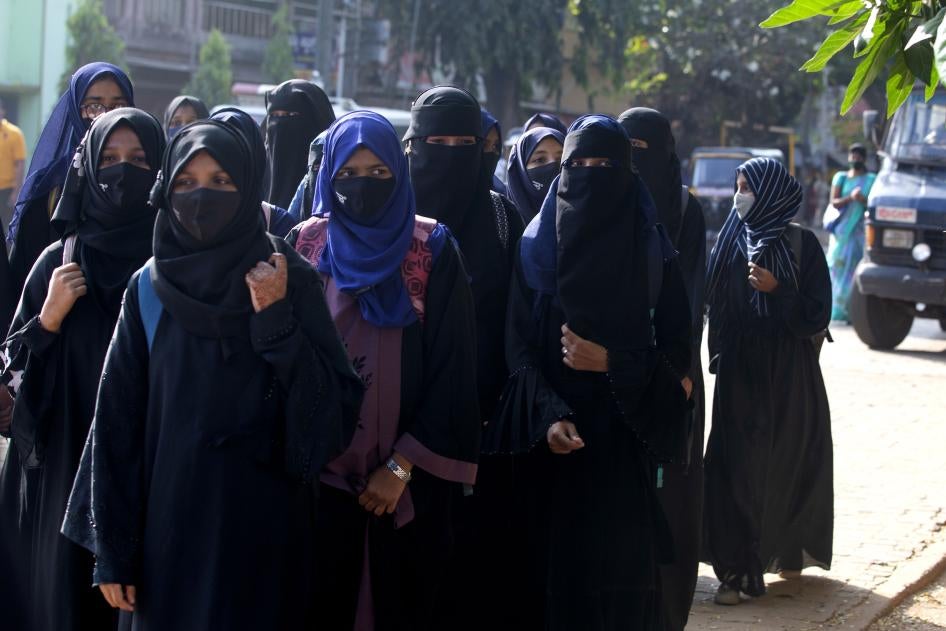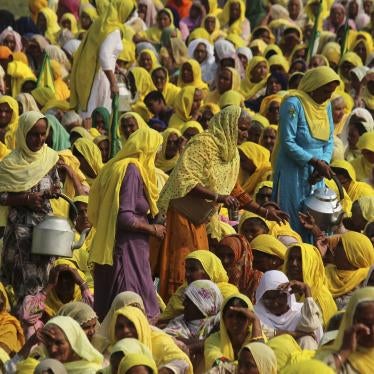The recent protests in India’s Karnataka state over the wearing of the hijab, or headscarf, in educational institutions have exposed communal rifts in India that are increasingly fueled by divisive political campaigns. These rifts are so strong, they have even led to temporary school closures in the state over the hijab issue.
The government’s hijab restrictions in schools and colleges violate India’s obligations under international human rights law, which guarantees the right to freely manifest one’s religious beliefs, to freedom of expression, and to education without discrimination. A court in Karnataka is hearing petitions challenging the ban.
The Karnataka government has backed the ban on Muslim female students from wearing the hijab in classrooms, claiming it is for public safety. Many Indians have taken to social media to express discriminatory and misogynist views; or to argue against them.
Discussions around students’ choice of garments should be recognized as yet another form of disenfranchisement of women and girls in India, regardless of faith. Many contend the hijab is often being imposed on Muslim women, and that those calling for the freedom of choice are actually causing harm. However, forbidding the use of religious garments, or otherwise forcing women and girls to dress in a particular way, both undermine their rights to choose their attire.
Another conversation is about safety. Some conservative Muslims insist the hijab covering protects women from sexual harassment. This reflects a broader view across Indian society that blames women for being targets of sexual abuse because of their choice of clothing. Many vociferously backing the hijab ban support the ruling Bharatiya Janata Party (BJP), where some leaders have previously called for bans on jeans and skirts, or said that rapes do not occur where people practice “traditional values.”
The argument that female garments are either a protection or a provocation in cases of sexual abuse is a form of victim-blaming, providing an easy excuse to avoid the difficult task of establishing effective mechanisms to prevent, respond, and punish violence against women and girls in a manner that supports survivors.
Instead of engaging in communal politics, Indian authorities should focus on protecting the rights of all women and girls, including to freedom of religion and expression, and to education.










